- Learning time
- 30 minutes
- First play time
- 90 minutes
Yspahan
Designed by: Sébastien Pauchon
This snappily-titled game is a homage to the ancient Persian capital of Isfahan and the players are traders in the city, trying to be the most successful over a three week period – the three rounds of the game. Everyone starts with a building board, two gold, and a set of merchandise cubes in their own colour.
One board shows the city, populated by the buildings (souks) which come in several colours. Another shows the camel trail. The starting player rolls a set of dice and these are laid out in numeric sets on a mat showing a number of actions, with the lowest number at the bottom and then the numbers ascending upwards. The bottom action is take camels, the top action is take gold, and the four actions in-between are to place merchandise in the four different areas of the city. Important to note, though, is that the more dice of a particular number, the more powerful that action becomes: only one die means only one reward, whereas more means… well, more. Players can forego the particular action in order to either pick up a card – more of which in a moment – or move the supervisor.
So, what do all these things mean and why take the actions? Well, merchandise in the city scores you points at the end of the week. If the supervisor moves to a souk selling your merchandise, he buys it and it gets sent off to the camel trail. While the camel trail is good because it scores you points, you’ve now lost your point scoring presence in the city – unless you have a camel, in which case you can pay one camel per merchandise to keep your city merchandise, and your presence on the camel trail. Gold has a variety of uses – including the ability to roll extra dice that you can keep for yourself.
The camel trail, like the city, is scored at the end of each week (or before, if it is full). Players multiply the amount of cubes they have on the trail by the level they have reached (there are three levels: if you have three cubes on level three, say, that’s a heft haul of nine points)
Finally, the cards and buildings. Both of them help you during the game in a variety of ways. Cards are free (though you sacrifice an action to take them) whereas buildings cost camels and gold to build – but building is not an action, so you can do it as well as your standard turn. As well as helping you during play, buildings also score you points. After each week the city is emptied and scored, and at the end of the third week the player with most points wins.
The guru's verdict
-
Take That!
Take That!
There is a seam of Take That running through the game, which is very much about turn order. If you're going before any other player, you probably want to keep an eye on what action they're after and see if taking that action for yourself makes sense...
-
Fidget Factor!
Fidget Factor!
Low. There may be some thought about which action to take, but there are only ever six at the most and often the dice make up your mind for you - taking those four gold makes more sense than taking one camel.
-
Brain Burn!
Brain Burn!
Yspahan is fairly abstract and particularly so on a first play. But once familiar with it the brain-burning is really limited to the action choices.
-
Again Again!
Again Again!
Randomness is guaranteed by the cards and the dice, and Yspahan plays in under an hour once you know it. A friendlier game than initial appearances suggest.

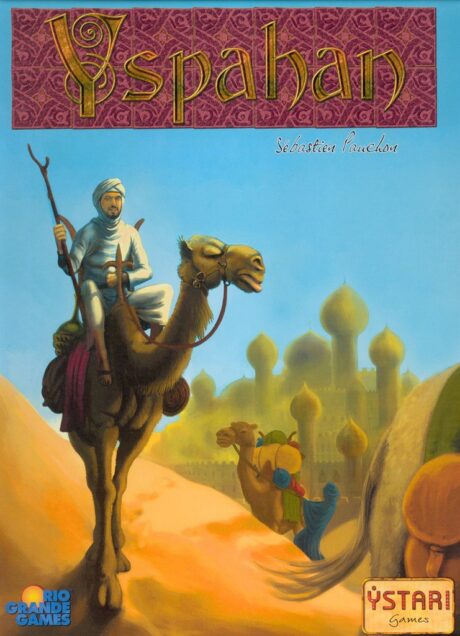

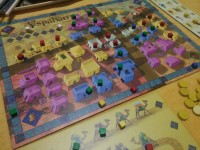


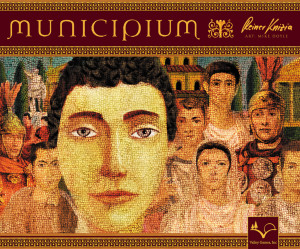
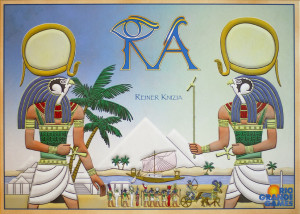

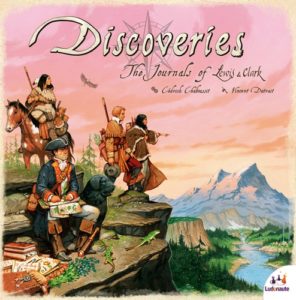
Sam says
Yspahan is one of those games you can find yourself explaining purely by talking about the rules and realise you've completely missed out what it's supposed to be about. That's not a terrible crime, but it does feel to me more a collection of neat mechanics than a neatly-parceled theme. As such it doesn't sail into my best-ever list, but I think it's a solid game, with various strategies (the city, the trail, buildings) and the dice element is good fun.